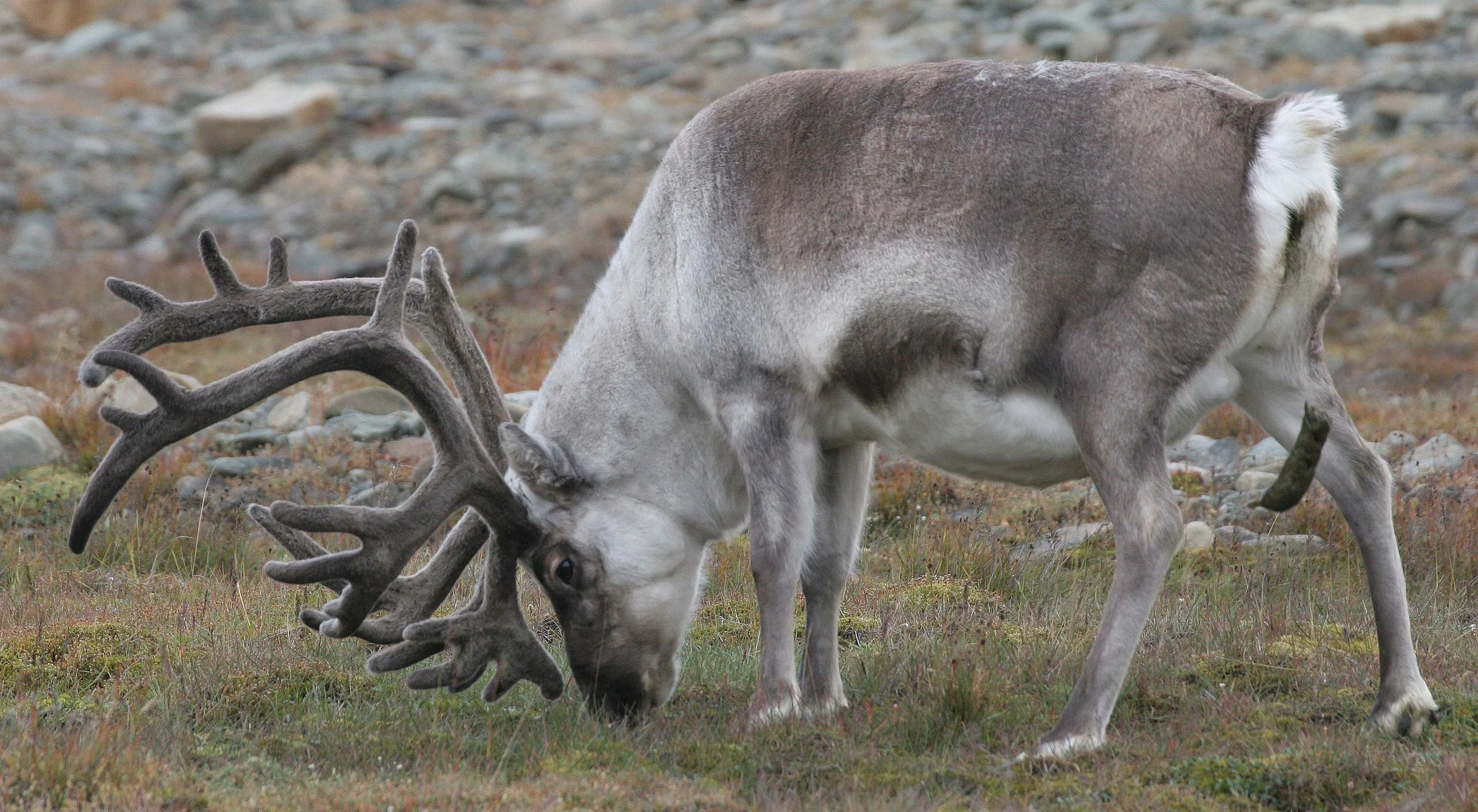
Genus Rangifer, the Reindeer
The reindeer (Rangifer tarandus), also known as the caribou in North America, is a species of deer with circumpolar distribution, native to Arctic, subarctic, tundra, boreal, and mountainous regions of range of caribou extends from Alaska through the Yukon, the Northwest Territories and Nunavut into the boreal forest and south through the Canadian Rockies. The barren-ground caribou, Porcupine caribou, and Peary caribou live in the tundra, while the boreal woodland caribou prefer the boreal forest. The Porcupine caribou and the barren-ground caribou form large herds and undertake lengthy seasonal migrations from birthing grounds to summer and winter feeding grounds in the tundra and taiga. The migrations of Porcupine caribou herds are among the longest of any mammal. Barren-ground caribou are also found in Kitaa in Greenland, but the larger herds are in Alaska, the Northwest Territories, and Nunavut.
The Svalbard reindeer (Rangifer tarandus platyrhynchus) is a small subspecies of reindeer found on the Svalbard archipelago of Norway. Males average 65–90 kg (143-198 lb) in weight, females 53–70 kg (116-154 lb), while for other reindeer generally body mass is 159–182 kg (350-400 lb) for males and 80–120 kg (176-264 lb) for females
The subspecies is endemic to the islands of Svalbard, where it has lived for at least 5,000 years, and has become well adapted to the harsh climate, being found on nearly all non-glaciated areas of the archipelago. By 1925 they had almost gone extinct due to over-hunting in the late nineteenth and early twentieth centuries. Over recent decades their population has increased. As of 2019 the total population across the archipelago is approximately 22,000. They are the only large grazing mammal in the European High Arctic, and this makes them exceptional for studies concerning the introduction of pollutants to changing ecosystems. During the short Arctic summer, Svalbard reindeer feed on a lush tundra vegetation of vascular plants, including grasses, herbs, sedges and deciduous shrubs in the lowland plains and valleys, to accumulate fat for the winter. The fur of Svalbard Reindeer contains elements and chemicals picked up from the vegetation they digest. They are relatively sedentary, and are thus highly vulnerable to changes in local conditions.
Compared to other reindeer, they are short-legged and have a small, rounded head. Their fur is also lighter in colour and thicker during winter. The thickness of the coat contributes to the short-legged appearance and makes even starved animals appear fat in the winter. The males develop large antlers during the period from April to July and shed the velvet during August–September. Males lose their antlers in early winter. Females develop antlers starting in June and they are usually retained for a whole year.
Some 200 reindeer were found starved to death in July 2019. Rain on snow early in the winter season formed thick layers of ice on the tundra, making grazing plants inaccessible, a result of the warmer temperatures due to climate change.
Svalbard Reindeer (Caribou) (Rangifer tarandus platyrhynchus) - Seen on Svalbard Archipelago






























































Norway (Mountain) Caribou (Rangifer tarandus tarandus) - Both wild and domesticated individuals in this gallery. Seen in northern Norway in Lapland



























































Grant’s (Porcupine) Reindeer (Rangifer tarandus granti) - Alaska, Denali National Park (scanned slides 1991)












Finnish Forest Raindeer (Rangifer tarandus fennicus) - seen domesticated in Lapland in the far north of Finland and eastern Norway









